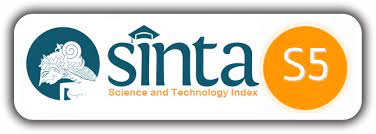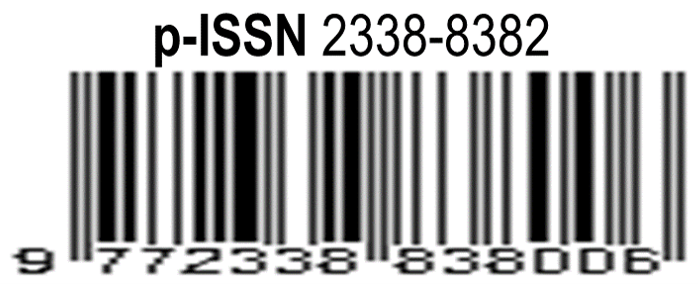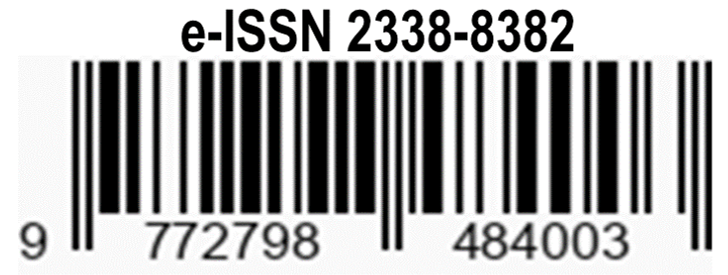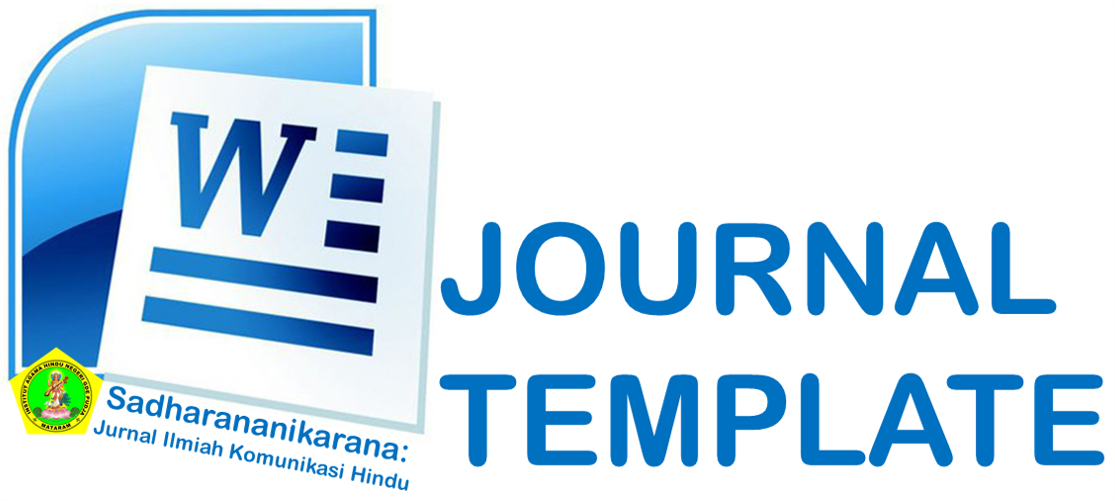Dimensi Komunikasi Sebagai Pendorong Dinamika Soliditas Sosial Pada Masyarakat Hindu Di Kota Mataram
Abstract
This research is intended to examine the dimensions of communication as a driver of the occurrence of the dynamics of social solidity in the Hindu community in the city of Mataram. The design of this study is descriptive quality in order to find the substance related to the role of communication in influencing the dynamics of social solidity. Based on the results of the study it was found that the dynamics in social solidity that occur among Hindus in the city of Mataram communication became a driving force in realizing the dynamics of social solidity that was based on the existence of messages conveyed through the media or directly. First, this communication can be a driver to improve the quality of education which in turn leads to changes in religious social life. Second, communication also has a very important role in cultural adaptation. In this case through communication cultural adjustments occur, namely external cultures that enter the culture of the local community. Third, communication in managing the implementation of religious ceremonies has embodied modern patterns of organizational communication. In the implementation of religion the organizational communication process has a very important role in realizing the implementation of effective and efficient activities. Fourth, transcendent communication concerning the relationship between Hindus and worshiped God. In this case there is a tendency that the dynamics of social solidity in Hindu society in Mataram City are influenced by transcendent communication which is more personal in nature. This is what distinguishes it from the historical period, namely the implementation of religion is emphasized more togetherness aspects through joint activities that can encourage social ties.
References
Nottingham, Elizabeth K. 2002. Agama dan Masyarakat, Suatu pengantar Sosiologi Agama. terjemahan Abdul Muis Naharong. Jakarta: Raja Grasindo Persada
Sanderson, S. K. 2003. Makro Sosiologi. Terjemahan Farid Wajidi, S. Menno. Jakarta: PT Raja Grafindo Persada
Suyadnya, I W. 2004. Budaya Bali Lombok. Denpasar: Bp
Stompka, Piotr. 2004. Sosiologi Perubahan Sosial. terjemahan Alimandan. Jakarta: Prenada Media
........... 2007. Analisis Ideologi, Kritik Wacana Ideologi - Ideologi Dunia. Terjemahan Haqqul Yaqin. Jogjakarta: IRCiSoD
Triguna, I.B.Y. 2001. “Redifinisi Simbolisme Masyarakat Hindu Di Bali” Denpasar: Laporan Penelitian Unhi
.............. 2000. Teori Tentang Simbol. Denpasar: Widya Dharma.
...............1994. “Pergeseran Dalam Pelaksanaan Agama: Menuju Tattwa” dalam Buku Dinamika masyarakat dan Kebudayaan Bali. Editor: I Gde Pitana. Denpasar : BP;
...............2008. “Modal Budaya dalam Perspektif Teoritik dan Terapan”. dalam Buku Kebudayaan dan Modal Budaya Bali dalam teropong Lokal, Nasional, Global. Editor IBG Yudha Triguna. Denpasar: Widya Dharma;
Triguna, I.B.G.Y. 2004. “Kecenderungan Perubahan Karakter Orang Bali”. dalam buku: Politik Kebudayaan dan Identitas Etnik. Denpasar: Fakultas sastra Unud dan Balimangsi Press;
Tutik, T.T. dan Trianto. 2008. Dimensi Transendental dan Transformasi Sosial Budaya. Jakarta: Lintas Pustaka;
Wiana I Ketut. 2002. Memelihara Tradisi Veda. Denpasar: BP
.............2004. Menurut Hindu Konflik Sosial Berwajah Ganda. Denpasar: Pustaka Bali Post;
..............2006. Memahami Perbedaan Catur Varna, Kasta dan Wangsa. Surabaya: Paramita;
Wiana, I Ketut dan Raka Santeri. 1993. Kasta Dalam Hindu, Kesalahpahaman Berabad-Abad. Denpasar: Yayasan Dharma Naradha;
Widja, I G. 2008. “Menatap Masa Depan Bali Melalui Tanggung Jawab Kultural Pendidikan”. Dalam Buku Dinamika Sosial Masyarakat Bali dalam Lintas Sejarah. Editor I Wayan Ardika dkk. Denpasar: Swasta Nulus.





.png)


.png)






